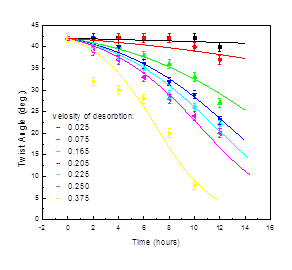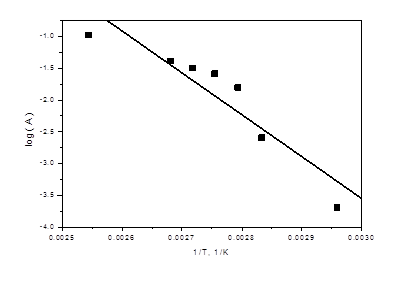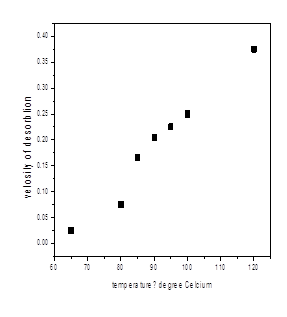|
The mechanism responsible for liquid crystal alignment has been of fundamental interest for the past three decades. Most of the methods used to affect liquid crystal alignment by a treating the surface of a substrate have been empirical perfected. The understanding of the underlying mechanism responsible for their alignment had remained very superfluous until very recently [1]. The goal of this project is to study LC alignment on surfaces that have been prepared without mechanical rubbing [a method used in liquid crystal display (LCD)† industry] or any other surface treatment to better understand the interactions between a substrate and thermotropic nematic LC molecules to gain insight in to LC alignment, anchoring strength, its time and temperature stability, and the associated surface memory effect. Our ultimate goal is to understand the microscopic origin of these phenomena.
The approach we plan to take involves alignment of LC on a substrate with the help of† magnetic field and investigation of the physical mechanism of LC alignment. Commercially available nematic liquid crystals, e.g., 4,4'-n-pentylcyanobiphenyl (5CB) will be used to observe the effect of the chemical nature of the LC and to infer characteristics that are independent of the chemistry. Thin cells will be prepared by cooling from the isotropic phase at different initial temperature in the presence of a strong magnetic field lying in the plane of clean substrate (e.g., coated with ITO or ITO plus a polyimide (PI) film). This field induced alignment also exhibits the surface memory effect.
To get an expression for the interaction energy of LC due to a layer of adsorbed molecules, we will assume that the angular distribution of the long axes of the adsorbed molecules is determined as a projection of the bulk distribution onto the surface since the liquid crystal molecules are distributed in the bulk anisotropically, the adsorbed molecules are also distributed anisotropically. The interaction of the bulk molecules with the layer of adsorbed molecules is proportional to the surface of the adsorbed molecules. The surface density of the adsorbed molecules is determined by the probabilities of the adsorption and the desorption of the LC molecules in a unit time. An evident change in the anchoring energy appears to be present when the cell is heated above the clearing temperature. The cause of this effect is that unlike a mesophase, the distribution of the molecules at T > Tc is isotropic one and adsorption of these molecules on the surface is also isotropic. At the same time the angular distribution function of desorbing molecules is anisotropic because these molecules belong to the anisotropic layer formed in the mesophase. In this case the exchange by molecules between the test surface and the bulk decreases the anisotropy of the angular distribution of adsorbed molecules that in turn, results in decrease of the anchoring energy. Increase of temperature speeds desorption from the anisotropic layer. It causes decrease of the concentration of anisotropically distributed adsorbed molecules which are replaced by isotropically distributed molecules from the bulk. Therefore, increase of the temperature results in faster decreasing of anchoring energy. |
|
Memory Effect |

|
Figure 1. Experimental (dots) and theoretical (solid) dependence of the twist angle on thermal annealing time: black points - 65o, red - 80o, green - 85o, blue - 90o, cyan - 95o, magenta - 100o, and yellow - 120o. |


|
Figure 2. Dependence of the probability of desorption on the temperature of thermal annealing . |
|
Figure 3. Dependence of† lnA_ on 1/T which yields an activation energy DE = 0.55 eV |
|
References
1. Dynamic of molecular exchange between aligning surface and liquid crystal bulk, Rui Guo, Y. Reznikov, K. Slyusarenko, and S. Kumar, Appl. Phys. Lett. 92, 121911 (2008). 2. Liquid Crystal Alignment Induced by a Magnetic Field and the Associated Surface Memory Effect, Rui Guo, Kostyantyn Slyusarenko, Yuri Reznikov, Qingbing Wang, and Satyendra Kumar, Baltimore, MD, APS March meeting,† March 12-17, 2006. 3. Noncontact Liquid Crystal Alignment by a Magnetic Field and the Associated Surface Memory Effect, Rui Guo, Kostyantyn Slyusarenko, Yuri Reznikov, Qingbing Wang, and Satyendra Kumar, Keystone, Colorado, USA, ILCC, July 2-7, 2006. |
|
Nematic liquid crystals, 4,4í-n-pentylcyanobiphenyl (5CB) has been observed to align in thin cells prepared by cooling to the nematic phase from the isotropic phase in the presence of a strong magnetic field lying in the plane of the ITO coated glass substrate. This field induced alignment also exhibits the surface memory effect. Anchoring energy was found to dependent on temperature and the time of thermal annealing above the clear point. We considered the experimental data in the context of a model which associates the anchoring energy value with anisotropic angular distribution of the LC molecules adsorbed on the surface caused by the magnetic field, and with the change of this distribution with time and temperature due to molecular adsorption/desorption. |
|
2. Magnetic Field Induced Liquid Crystal Alignment |

